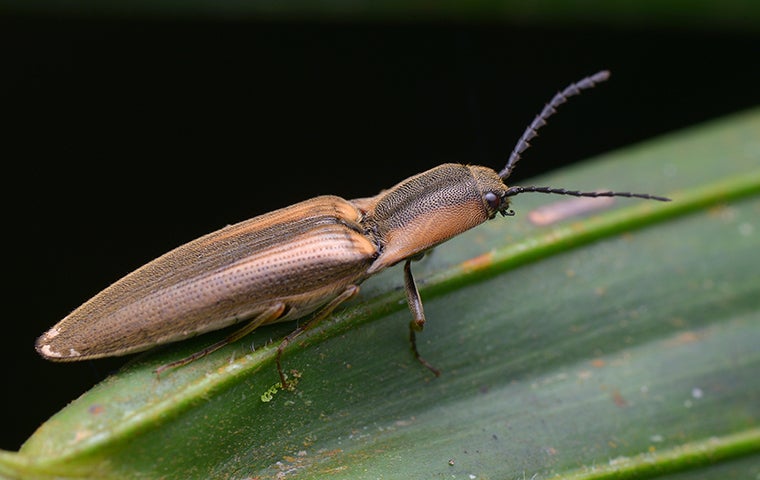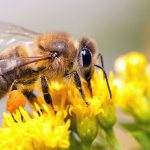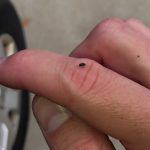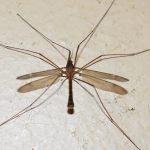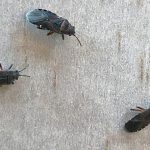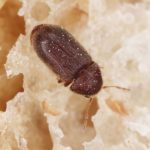Are you tired of being disturbed by those annoying clicks in the middle of the night? Are small beetles creeping their way onto your floors and walls causing trouble? Well, you’re not alone. Click beetles are a common nuisance that can be found worldwide, especially in North America.
These little critters belong to the Elateridae family, and while they don’t harm humans or pets, their presence can cause some serious annoyance. It’s time to take action and get rid of them for good.
In this informative blog post, we will provide you with a comprehensive guide on how to get rid of click beetles once and for all. We’ll identify these pesky bugs, including their habits and habitats.
Then, we’ll dive into effective tips on how to deter and eradicate them from your home. We’ll explore natural remedies like essential oils and sprays as well as chemical interventions such as insecticides and baits.
By the end of this article, you’ll have all the knowledge you need to banish click beetles from your home forever.
So, let’s gear up and journey towards a beetle-free environment.
What Are Click Beetles?
Contents
These extraordinary insects, belonging to the family Elateridae, have a unique defense mechanism of flipping themselves into the air with a loud clicking sound when threatened. But before we delve into their captivating behaviors, let’s explore what click beetles are.
Click beetles are found all over the world and are particularly abundant in North America. They are unmistakable, with elongated bodies flattened from top to bottom.
Ranging in size from 0.5 inches to 1 inch in length, they can be brown, black, or gray and have bodies covered in tiny hairs or scales that give them a velvety texture.
Adult click beetles come out at night and are attracted to light sources. They feed on nectar and pollen from flowers but are not considered pests since they do not damage crops or property. However, their larvae can be a troublesome pest for gardeners and farmers.
The click beetle larvae, known as wireworms due to their long, thin bodies, live in the soil and feed on the roots of plants such as vegetables, fruits, and grains.
They can cause significant damage to crops, leading to reduced yields and increased costs for farmers. Therefore, controlling wireworms is essential for crop protection.
Despite their potential as pests, click beetles are still fascinating creatures that have adapted unique methods of defense against predators. Their ability to snap themselves out of danger with a loud clicking sound is a remarkable feat of evolution.
Click beetles are intriguing insects that are both beneficial and harmful to our environment.
While adult click beetles are harmless and often beneficial to the ecosystem, their larvae can be destructive pests that require control measures to protect crops.
Identifying the Source of Infestation
Not only can click beetles be a nuisance, but they can cause significant harm if left unchecked.
In this post, I’ll guide you through identifying the source of a click-beetle infestation by using simple-to-understand sentences with an engaging tone.
To start, locating the point of entry for click beetles is key. These pests attract light and can easily infiltrate homes through open windows or doors.
Check all windows and doors for gaps and cracks that may allow click beetles to enter. Sealing these openings with caulk or weatherstripping will prevent further infestation.
Next, it’s essential to identify any areas where click beetles may be hiding or laying eggs. These critters tend to favor moist areas such as basements, attics, and crawl spaces. Carefully check these areas and remove any debris or clutter that may provide a breeding ground for click beetles.
Plants and soil are also common sources of click beetle infestation. Click beetle larvae feed on the roots of plants, so if you have a garden or potted plants indoors, inspect them regularly for any signs of damage or wilting.
Remove infected plants and replace them with new ones to stop the infestation in its tracks.
Identifying the source of a click beetle infestation is crucial when dealing with these pests.
By locating their point of entry, checking moist areas for hiding spots, and inspecting plants for signs of damage, you can effectively get rid of click beetles and prevent future problems.
Vacuuming to Remove Click Beetles
Vacuuming is undoubtedly one of the easiest and most effective methods to eradicate click beetles from your home.
Since these pests love to hide in carpets, vacuuming your floors regularly is crucial. However, not all vacuums are created equal.
You need a high-powered vacuum cleaner with a strong suction and HEPA filter to get rid of these pesky critters. This will ensure that the beetles and their eggs are completely removed from the carpet.
To guarantee that you’re eliminating click beetles from your carpets, vacuum at least once a week. Please pay particular attention to areas where they’re commonly found, such as under furniture and along baseboards. Also, remember to check those dark corners. Moving your furniture around is essential to reach all areas of the carpet.
When you’re done vacuuming, dispose of the vacuum bag or empty the canister outside or in a sealed plastic bag. This will prevent any remaining beetles or eggs from escaping back into your home and starting the cycle all over again.
In addition to regular vacuuming, steam cleaning is another effective way to eliminate click beetles from carpets. By steam cleaning every six months, you’ll get rid of any remaining click beetles and remove any dirt or debris that may be attracting them.
You can keep your home free of click beetles by incorporating regular vacuuming and steam cleaning into your cleaning routine. These techniques will help you maintain a clean and healthy living environment, free from pesky pests like click beetles.
Using Insecticides to Get Rid of Click Beetles
Many homeowners struggle with these pesky pests. Fortunately, there’s a solution. Insecticides can be an effective way to get rid of them. However, using insecticides carefully and properly is important to avoid harming yourself or the environment.
There are two types of insecticides that can be used: contact and systemic. Contact insecticides are sprayed directly on the beetles and kill them on contact. This type of insecticide is best for smaller infestations, but be sure to read the label carefully and follow the instructions for use.
Systemic insecticides are absorbed by the plant and ingested by the beetles when they feed on it. This type of insecticide can be effective for larger infestations because it targets the entire population of beetles, not just those that come into direct contact with the pesticide. However, systemic insecticides can be harmful to beneficial insects like bees and butterflies, so use them carefully and selectively.
Before using any insecticide, it’s essential to identify the specific type of click beetle causing the problem. Some beetles are resistant to certain types of insecticides, so using the wrong one may not be effective.
It’s also essential to follow all safety precautions when using insecticides, including wearing protective clothing and avoiding contact with skin or eyes.
Insecticides can be a valuable tool in getting rid of click beetles. With proper use, you’ll be on your way to a click beetle-free home in no time.
Preventative Measures to Avoid Future Infestations
Don’t let click beetles take over your home – take preemptive action with these preventative measures. You can avoid future infestations and enjoy a pest-free living environment by identifying and eliminating the conditions that attract and support these pests.
First things first: keep your house clean and tidy. Click beetles love clutter as it offers them hiding places, so get decluttering. Sealing all cracks and crevices in walls, floors, and ceilings can also prevent click beetles from entering your home through small openings. Installing screens on windows and doors can help, too – it’s amazing how many pests can squeeze through the tiniest gaps.
Moisture is a big attraction for click beetles, so control the levels in your home by repairing any leaks or water damage ASAP. Keeping areas dry and well-ventilated will discourage click beetles from entering your home. Proper storage of food and other organic materials is also crucial. Store food in sealed containers and promptly dispose of any decaying organic matter to eliminate a food source for click beetles.
These preventative measures will help ensure a safe and healthy environment for you and your family. Remember to be vigilant and proactive in protecting your home from these pests – prevention is always better than cure.
Natural Remedies for Getting Rid of Click Beetles
Don’t worry; and there are natural remedies that can effectively get rid of them without harming the environment or your health. Pesticides are not the only solution; we have some great natural alternatives for you.
One of our top natural remedies is diatomaceous earth, a fine powder composed of fossilized algae. When ingested by insects, it dehydrates their bodies and ultimately kills them. To use diatomaceous earth, sprinkle it in areas where click beetles are present, such as around doors, windows, or plants.
Another effective remedy is neem oil, extracted from the seeds of the neem tree. It contains compounds that repel insects, making it ideal for getting rid of click beetles. To use neem oil, mix it with water and spray it on plants or areas where click beetles are present.
Essential oils like peppermint, cedarwood, and lavender are excellent natural remedies for repelling click beetles. They have strong scents that are unappealing to insects. Mix a few drops with water in a spray bottle and spray in areas where click beetles are present.
Natural remedies are safe, non-toxic, and eco-friendly for removing click beetles. So next time you spot a click beetle in your home or garden, consider trying one of these natural remedies instead of harmful pesticides.
Conclusion
In conclusion, click beetles may seem impossible for homeowners, but fear not. With the right knowledge and tools, you can eradicate these pesky critters from your home. It’s crucial to identify the source of the infestation by locating their point of entry, checking moist areas for hiding spots, and inspecting plants for signs of damage.
Vacuuming and steam cleaning carpets effectively eliminate click beetles from your floors. If you’re looking for a more aggressive approach, insecticides can also be used to get rid of them. However, using them carefully and properly is important to avoid harming yourself or the environment.
Prevention is key when it comes to avoiding future infestations. Keep your house clean and tidy. Seal all cracks and crevices in walls, floors, and ceilings. Install screens on windows and doors, control moisture levels in your home by repairing any leaks or water damage, store food in sealed containers, and dispose of any decaying organic matter promptly.
And if you’re looking for a natural solution that won’t harm the environment or your health, consider diatomaceous earth, neem oil, or essential oils as safe alternatives to pesticides that can effectively eliminate click beetles.
By following these comprehensive tips on how to get rid of click beetles once and for all, you’ll have a beetle-free environment in no time.

